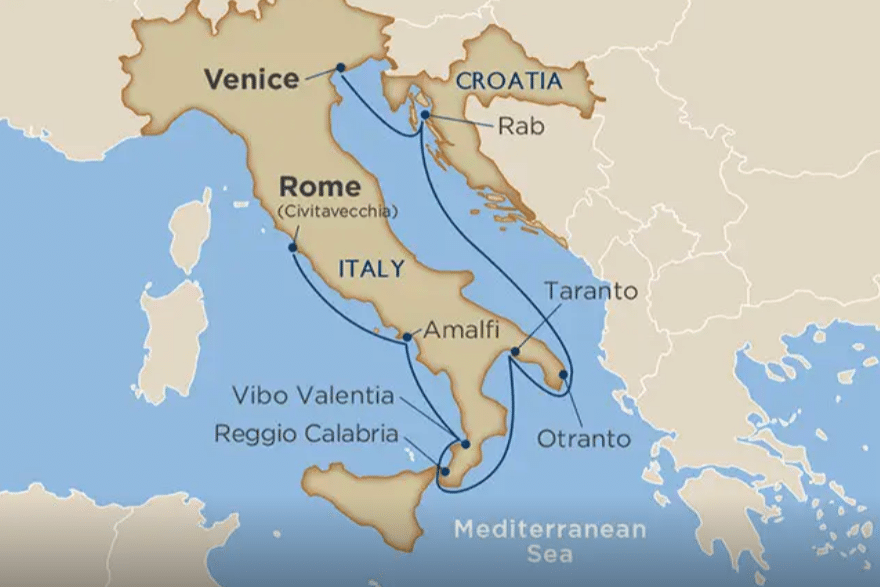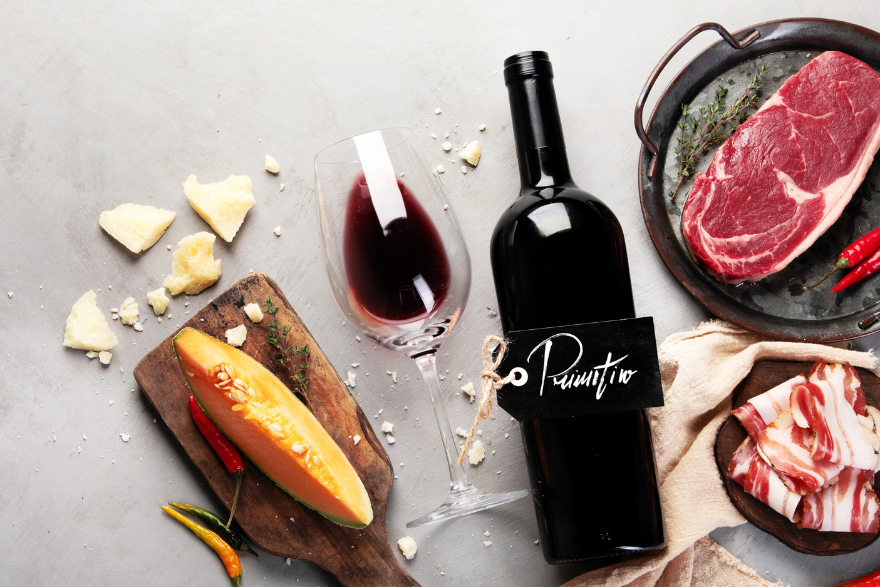Have you ever tasted Puglian wine? This prominent wine-producing region is a wonderful destination for romantics, history buffs and amateur sommeliers alike.
Pughlia, a popular region in southeast Italy, is essentially the heel in the boot of Italian geography. Its ports of Taranto and Otranto are popular parts of Windstar’s Bella Italia Southern Italian Romance itineraries, and often include destinations such as Italy’s neighborhing Reggio-Calabria and, on the Adriatic, the Croatian coast. Its appeal? It’s home to quaint villages, picturesque farms and breathtaking castles — and, of course, wine.

While Puglian tourism has been on the rise in recent years, much of the region is still off the main tourist track. If you love trying out new wines, definitely check into Windstar’s wine-themed shore adventures, like a trip out in the country to Campi Deantra.
Puglia and Wine

Puglia’s warm climate and fertile soil make the region perfect for growing wine grapes, which is why it’s tied with Sicily for the second-largest wine-producing region in Italy. It’s also the country’s top olive oil region, contributing nearly 40% of Italy’s total production. It’s also the birthplace of burrata, a soft cheese made from mozzarella and cream.
Puglia is also a region that beautifully blends old and new. Throughout the region, you’ll find idyllic vineyards, old churches and ancient ruins from generations past. And while it used to have a reputation for producing low-end bulk wine, up-and-coming independent wineries are transforming the region with innovative, artisanal blends.
Types of Wine Puglia Produces

Puglian wine is known for its full-bodied, fruit-forward red wines, though there are plenty of white and Rosato (rosé) varieties available as well.
The two most popular Puglian red wines are:
- Primitivo: If you’ve tried Zinfandel, you’ve tried Primitivo grapes! Italian immigrants brought these early-ripening grapes with them to the U.S. in the 19th and 20th centuries. They produce bold and fruity wines with a distinct jammy taste that resembles dried fruit. Try a Primitivo wine with a Puglian dish like parmigiana di melanzane — that’s eggplant Parmesan in English.
- Salice Salentino: Made from Negroamaro grapes in the southern region of Salento, Salice Salentino is a dry red varietal with low acidity and a robust body. Its unique flavor profile offers hints of raspberry, plum and spices, which goes well with olive oil-based Mediterranean foods like antipasti, savory soups and grilled meats.
Curious about the region’s lesser-known offerings? You can find many different types of wine grapes in Puglia, including:
- Bombino Nero: This late-ripening red grape has thin skin, making it perfect for Rosato. Bombino Nero Rosato is high in acidity and has a fruity, floral flavor profile with hints of strawberry and rose petals. It pairs well with charcuterie, pizza, salads and seafood.
- Bombino Bianco: This white wine grape produces light-bodied, soft wines with subtle notes of citrus and wildflowers. You’re most likely to find it in blends or sparkling wines, which pair well with fresh cheeses, pasta and lean fish. It’s also commonly used to make raisins.
- Nero di Troia: This black-skinned grape is native to northern Puglia and most commonly found in dry red wines. It has a medium acidity and high tannins, with rich flavors like licorice, plum and tobacco. Such a bold taste makes it a perfect fit for rich dishes like lasagna and roasted game.
- Verdeca: Verdeca grapes are neutral in flavor and unique to Puglia, though they’ve fallen out of fashion in recent years. Wines that feature Verdeca are usually light-bodied and refreshing, with notes of pineapple and citrus that make them a delightful complement to shellfish and fresh vegetables.
- Greco Bianco: Historians believe this millennia-old white grape has ties to ancient Greece — it may have been one of the original grapes planted by the Greek colonizers during the eighth century. It’s often used in dessert wines, but you might also find it in dry wines. Ideal pairings for Greco Bianco-based wines include pasta with shellfish and candied nuts.
For those who want to experience the Puglian wine scene for themselves, we recommend taking a tour through the vineyards or enjoying a wine pairing session at one of the region’s many wineries.



















































